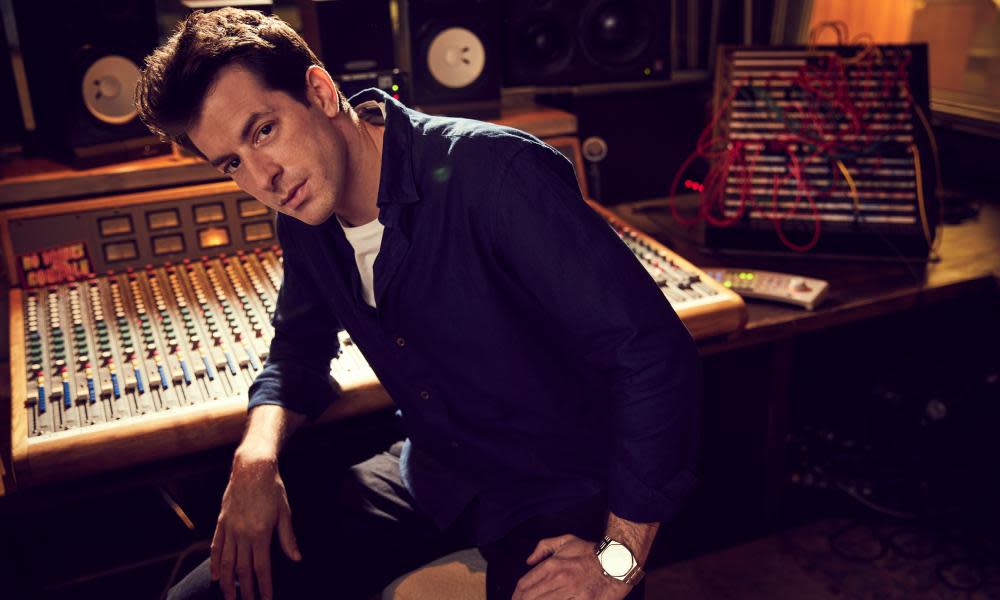Watch the Sound with Mark Ronson review – Paul McCartney and more geek out in the studio

Fans of Song Exploder should find much to enjoy in Watch the Sound with Mark Ronson (Apple TV+), which takes a similar approach to that of the beloved music-breakdown podcast and TV series but applies it to recording technology and gear rather than individual songs. The producer and DJ recruits his famous friends – and I’m sure the Apple connection doesn’t hurt when it comes to access, either – to present a who’s who of musicians and producers across six episodes.
The first, about Auto-Tune, is a wobbly introduction to the premise, though the series quickly improves, and eventually comes to resemble a Friday night BBC Four doc with endless A-list contributors. The access to stars here is borderline ridiculous: there’s Dave Grohl, talking about drum machines, Josh Homme on distortion, Questlove and the Beastie Boys discussing sampling, Gary Numan dissecting synths, Paul McCartney covering, well, everything, because he’s Paul McCartney. At one point, McCartney suggests that John Lennon would have been “all over” Auto-Tune technology. Cut to Ronson in the studio with Lennon’s son, Sean Ono Lennon, as they put Lennon Sr’s song Hold On through various plug-ins to see what it might sound like. It sounds like Bon Iver. “That’s funny,” says Sean as his father’s voice fragments into a digital choir.
Ronson is an amiable host whose quiet drawl belies a self-deprecating sense of humour. He warbles into a microphone and puts his vocal through Auto-Tune while Charli XCX attempts to engineer it. “Mark, you don’t … sound good,” she says, as he wonders out loud if his vocal is simply too perfect to be corrected. He jokes about losing money every time one of his sample-heavy hits features on a prominent pizza advert. “Pizza’s on you,” he says.
There is no denying the power and provenance of Ronson’s anecdotes. If he wants to describe how a piece of technology works, he can go back through his own considerable back catalogue for reference. Want to know why reverb makes everything sound so emotional and dramatic? Here’s footage of Amy Winehouse recording the vocal for Back to Black in his studio. He talks about the immense cost of sampling Boney M for his monster hit Ooh Wee. And in an attempt to work out why Auto-Tune never really did it for him, he talks about writing Shallow with Lady Gaga, and tries to run her vocal through it, only to demonstrate Gaga’s perfect, uncorrectable pitch. Interestingly, though Auto-Tune has little to “correct”, the treated vocal becomes instantly colder.
It is clear that Ronson lives and breathes music, and some of the best moments are when he lets himself geek out to the fullest. He goes crate-digging in Japan, and hangs out with the great hip-hop producer DJ Premier. There are some great forays into musical history, which take a more left-field look at certain technological advances. He chats to Kathleen Hanna, of Bikini Kill and Le Tigre, about her use of distortion; she says it is one of the only times she has been asked about her music, rather than everything around it. There is a fascinating section on how the digital perfection of drum machines lends itself perfectly to the physical imperfection of human rhythm: a clash used by great pop stars such as Madonna and Janet Jackson. And at last, Cher gets the credit she deserves for the pioneering production of Believe.
Ronson sports an impressive collection of vintage band T-shirts, and he is great when he’s enthusiastic about a sound or chatting to his friends. However, he seems less confident when theorising to camera about “robots yearning to be human” and how software plug-ins can evoke “robot sadness, and it’s super powerful”.
Overall, it reminded me a little of an art project PJ Harvey did a few years ago, at London’s Somerset House, when she recorded her ninth album, The Hope Six Demolition Project, in a glass box in front of an audience. I went to see it, and while the novelty of watching music get made was impressive, it also showed that working in a studio is often painstaking and repetitive. Ronson has done some heavy lifting to ensure that Watch the Sound can hold the interest of your everyday viewer, and for the most part it does. But I still couldn’t quite work out who it was for. It is too focused on the techy details for mere mortals, and too careful to explain how plug-ins work to appeal to studio nerds. It sits slightly uneasily in the middle of the two.

 Yahoo News
Yahoo News 
